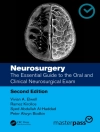A complete guide to colonoscopy featuring more than 1, 000 superb illustrations! In recent decades, colonoscopy has developed into one of the most essential techniques for early screening, detection, and diagnosis of colorectal cancer, inflammatory bowel disease, and other disorders. And rapid advances in interventional endoscopy offer doctors and patients an ever-increasing array of treatment possibilities. For newcomers to the technique and advanced practitioners alike, this lavishly illustrated atlas is a state-of-the-art guide to total colonoscopy. Atlas of Colonoscopy is… Accessible: Expert authors present all of the necessary instruments and examination techniques, as well as guidelines on preparation, related medications, complications, and more. Tips and tricks for instrument insertion and guidance Illustrated, thorough descriptions of normal findings in all colon segments A logical structure and easy-to-use-layout Practical: Detailed descriptions and multiple illustrations of numerous pathological findings Endoscopic criteria and differential diagnoses for all major diseases Useful guide to examination procedures depending on clinical findings Detailed: Coverage of the complete spectrum of interventional colonoscopy, including polypectomy, mucosectomy, tumor treatment, removing foreign objects, treating fistulas, and suture insufficiency Indications and success rates of various treatments, including thermocoagulation, injection, and mechanical treatments Compiled by a team of experts with decades of combined experience in the field, the Atlas of Colonoscopy is an essential resource for anyone working in an endoscopy unit.
Inhaltsverzeichnis
<p><strong>I General Information</strong><br>1 General Information Regarding Examination<br>2 Basic Examination Technique and Colonoscopy Workstation<br>3 Modern Endoscopic Techniques<br><strong>II Normal Examination Procedure and Non-pathological Findings</strong><br>4 Before the Examination<br>5 Inserting the Endoscope and Advancing It in the Colon<br>6 Normal Appearance of the Intestinal Segments<br>7 Normal Postoperative Appearances<br><strong>III Pathological Findings</strong><br>8 Diverticulosis and Diverticulitis<br>9 Polyps and Polyposis Syndromes<br>10 Malignant Tumors<br>11 Submucosal Tumors<br>12 Colitis—Inflammatory Bowel Diseases and Other Forms of Colitis<br>13 Acute and Chronic Lower Gastrointestinal Bleeding<br>14 Vascular Malformations and Other Vascular Lesions<br>15 Melanosis Coli<br>16 Solitary Rectal Ulcer Syndrome<br>17 Rare Diseases and Disorders<br><strong>IV Endoscopic Intervention</strong><br>18 Polypectomy and Mucosectomy<br>19 Interventional Tumor Therapy<br>20 Hemostasis<br>21 Management of Benign Strictures<br>22 Fistulas and Postoperative Leakages<br>23 Removal of Foreign Bodies<br>24 Decompression Tube Placement</p>
Über den Autor
Helmut Messmann












